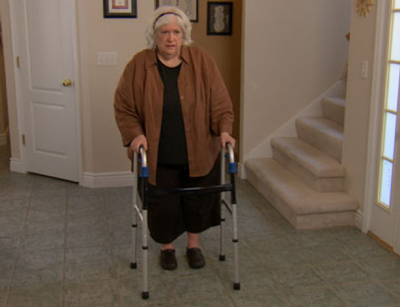A walker provides needed support and stability to allow a person with a weakness or injury to walk and move about safely. However, at times a person has difficulty using a walker. This may be due to fear of falling, pain, upper body muscles are too weak to use the walker, or the legs are too weak to support the body.
If the person continues to have difficulty, call the physical therapist or responsible doctor.
Routinely check the condition of a walker to be sure it is safe to use.
Here are some tips for preventing falls when using any type of walker:
